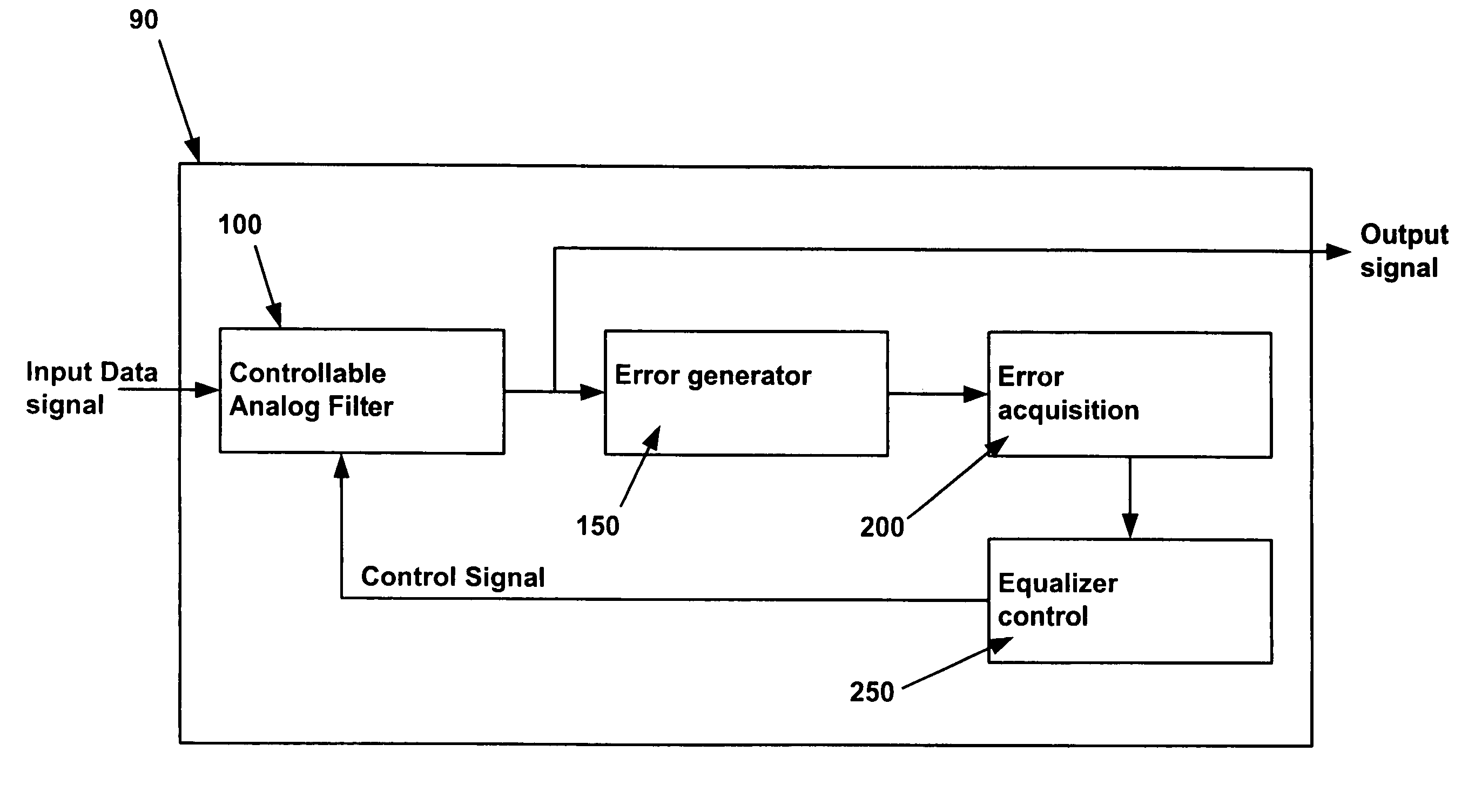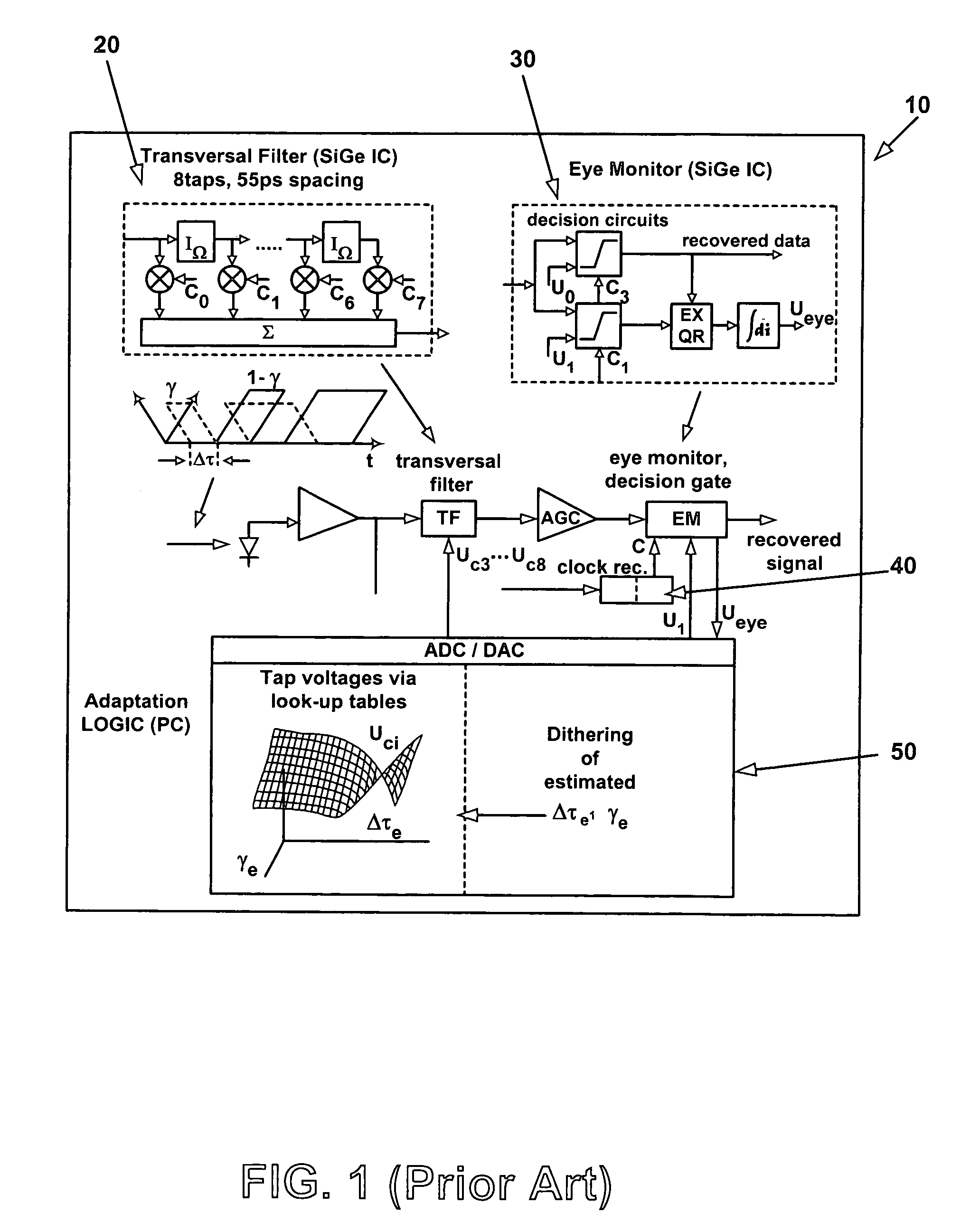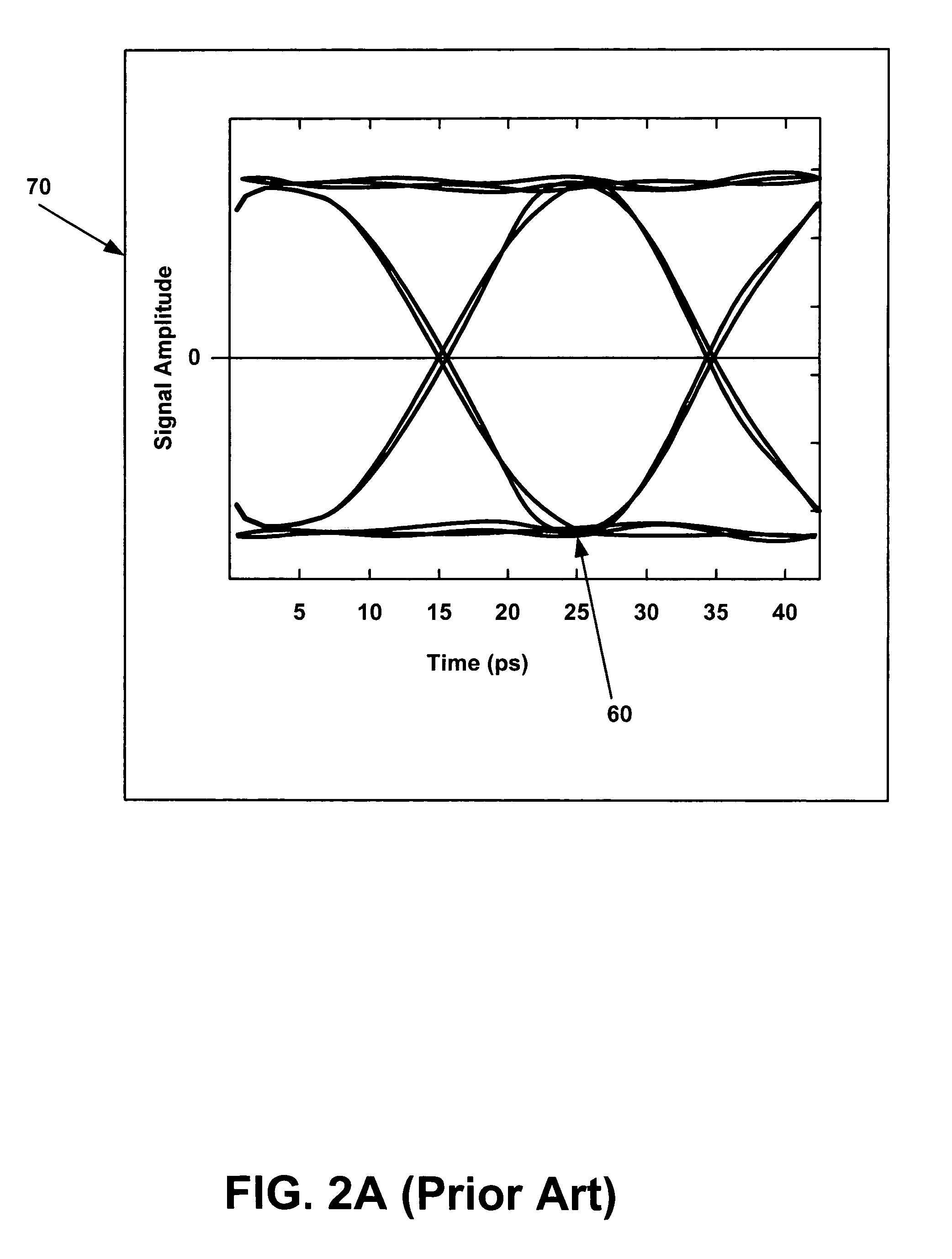Method and apparatus for improved high-speed adaptive equalization
- Summary
- Abstract
- Description
- Claims
- Application Information
AI Technical Summary
Benefits of technology
Problems solved by technology
Method used
Image
Examples
Embodiment Construction
[0019]FIG. 3 illustrates a preferred embodiment of the current invention 90. According to a preferred embodiment of the current invention, one or more data signals may be received by the controllable analog filter 100. Typically, the data signals may be analog, digital and / or sampled analog signals. Preferably, the one or more controllable analog filters serve to filter out noise and compensate for channel impairment or imperfections such as inter-symbol interference (ISI). In this example, a single controllable analog filter 100 is used. However, according to alternate embodiments of the current invention, one or more controllable analog filters may be used in various configurations. Furthermore, in some cases, a single controllable analog filter may comprise two or more filters. For example, FIG. 4 illustrates an example of a controllable analog filter 103 comprising two filters 110 and 112 implemented in a decision feedback equalizer (DFE) configuration according to an alternate ...
PUM
 Login to View More
Login to View More Abstract
Description
Claims
Application Information
 Login to View More
Login to View More - R&D
- Intellectual Property
- Life Sciences
- Materials
- Tech Scout
- Unparalleled Data Quality
- Higher Quality Content
- 60% Fewer Hallucinations
Browse by: Latest US Patents, China's latest patents, Technical Efficacy Thesaurus, Application Domain, Technology Topic, Popular Technical Reports.
© 2025 PatSnap. All rights reserved.Legal|Privacy policy|Modern Slavery Act Transparency Statement|Sitemap|About US| Contact US: help@patsnap.com



